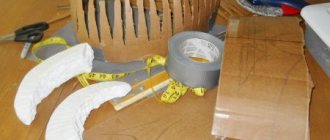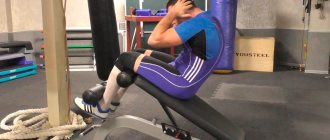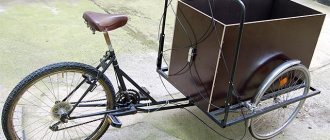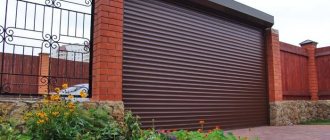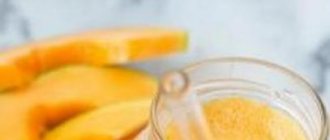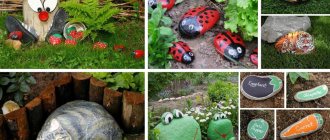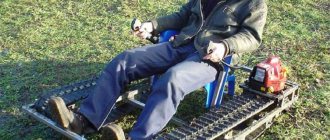A shield is the defensive equipment of warriors, which served as good protection against bladed and thrown weapons. Previously, when there were no firearms, almost every warrior had to have a shield, because they understood that their life depended on it. Shields have been created since ancient times, and until our time they have undergone many changes.
How to make a shield with your own hands?
We will show you how you can make a beautiful medieval shield from simple materials that you can find in your local stores, or even at home.
For our future shield we will need:
• Plywood • Bolts • Canvas awning • Paints • Glue • Nails • Suede • Leather belt
Having prepared everything, we can begin development. Here is a rough outline of what we will do:
Let's get started!
1. First of all, we get to work with plywood. Having decided on the dimensions, we transfer them to the shield and cut them out. Here are the dimensions of our shield:
Scheme of how to correctly mark the shield:
2. Plywood can be made slightly rounded, but only if there are special tools. If this is not possible, then you can leave it simple and flat.
3. When the workpiece is ready, we seal the front part with a canvas awning. To do this, cut out the canvas a little larger than the shield and glue it with glue. The edges should be folded into the middle.
4. Next, you need to install the belts. Here is the diagram according to which we will do the installation and marking:
5. We make holes for the belts and glue the suede part (we use glue and small nails), it is needed so as not to constantly scratch your hand on the plywood.
6. We fasten the belts with bolts.
7. The last step is painting the shield. Each nation colored its shield in a special way, because it was an indicator of belonging to the warrior state.
This is how we arrived at the final result – the finished shield!
VIDEO. How to make a shield out of wood?
Hello. Today we will talk about how you can make a shield with your own hands for role-playing games, or simply for the purpose of reconstructing ancient weapons and armor. Previously, we already looked at material about making a sword and scabbard, and also weaved chain mail. Now it’s the turn for the front line of defense of the medieval warrior - the shield. The shield should not only be durable and impact-resistant, but also lightweight. Therefore, think about what kind of wood, and we will make the shield from it, you will use. The best option for making a shield would be birch. This type of wood has not only good viscosity and elasticity, but also lightness compared to other alternative woods. Next, you need to decide on the size of the shield. A shield with a diameter of 600-700 mm is considered optimal. Such a shield will completely protect the forearm (from elbow to hand) and at the same time will not be too heavy.
Medieval shield manufacturing technology
The boards for the board must be well dried, have a straight-layer structure and do not have large knots. So, the shield manufacturing technology is as follows. Take a birch board measuring 2100x200x40, already pre-planed, and saw it into four parts. You should have two pieces of 620 mm each and two pieces of what remains. Carefully plan and fit the side edges of these boards tightly to each other. From these pieces we will glue the base of the shield. Use plasticized PVA glue. Leave to dry overnight.
Now we need to plan the planes of the shield blank in order to smooth out the joints of the boards, removing the steps. Next, we outline a circle with a radius of 300 mm and cut it out with a jigsaw.
Next we need to make our shield blank convex. To do this, on one side we plan with a plane, going deeper from the edge to the middle, and on the other hand, on the contrary, from the middle to the edge. As a result, we should get a kind of wooden lens 15-17 mm thick.
Well, we have the wooden base of a homemade medieval shield ready. Now let's get to the metal.
In the center of the shield there should be a convex bowl called the umbo. The umbo can be knocked out from a round metal plate 1.5 - 2.5 mm thick, placing it on a lead pad, and tapping with a hammer from the center in a diverging spiral until a convex dome is obtained with a diameter of 150-200 mm and a depth of 50 mm. We bend the edges on an anvil to a width of 15-20 mm. This is how cold forging is performed. But, in order to upset the cup to such a depth, you need to use hot forging, heating the metal with a gas burner or in a forge until red, pressing the metal in a ring mandrel or matrix. However, if blacksmithing is new to someone, he can order an umbon from a forge, or buy something similar in a store.
Now we need to forge the edge of our medieval shield with iron. To do this, we again need an anvil and a hammer to bend a steel strip two millimeters thick along a radius of three hundred millimeters in a plane. We place the strip on the anvil and begin to flatten one edge with a heavy hammer, periodically checking its curvature with a cardboard template. If your strip is made of ductile metal, then cold forging will be enough for you. But still, it is better to anneal by heating the strip with a gas burner until red and letting it cool slowly. After that, we continue to hit it with a hammer. It is not necessary to bend the strip along the entire circumference of the shield. You can divide it into several separate parts. It will be a little easier this way. Although the work is quite hard. We adjust the metal to the shield so that there is an edge left for bending to the thickness of the shield. Bend the edge ninety degrees can be done on an anvil. To do this, we replace one of the “lips” of the vice with a plate, the upper edge of which is curved along a radius of 300 mm, that is, along the circumference of our shield.
We carefully adjust the finished edging of the shield ribs to each other and attach them to the shield using bolts, which we will later replace with rivets. We also screw the umbon to the middle. Now we need to work on the remaining parts of the shield. We need to cut twelve shield covers from sheet iron using a jigsaw. The photo clearly shows what shape they should be. But you can show your imagination and make something of your own. The plates can be riveted to the panel with furniture bolts. We rivet from the inside of the shield, placing wide washers on the bolt rod. We saw off the rod so that it extends two or three millimeters above the surface of the shield.
Read also: DIY cold forging machines drawings video
Now we just have to make the shield holding elements. To do this, we need to carve a wooden handle (you can use a copper or brass tube) and rivet it from the inside of the shield. The forearm belt loop is made of leather, 70mm wide in the center and 40mm wide at the edges. We attach it to the shield also using through rivets. But the forearm pillow can be screwed to the shield with bolts with a rounded head.
Well, that's probably all. Our medieval shield is completely ready. You can start role playing, or hang it on the wall as decoration next to your other remodeled items. Good luck!
The article is a rewrite. Photos taken from the book “Reconstruction of Ancient Weapons”
| Plywood board base |
I made some shields using my shield press. And this article will describe in detail how to make a knight's shield. You can make yourself a shield in almost any shape you want (historical or not), and for the most part the construction methods will be the same. And to the question of historicity: in the Middle Ages, the bases for shields were made from boards, but modern plywood shields are faster and easier to manufacture and are not inferior in strength to planks. And the “non-historicity” of a plywood board is easily hidden under canvas or leather painted with authentic paints.
I hope my drawings and examples give you enough information to try making your own shield.
| Close-up photo of my shield. I painted this shield to match my surcoat. Since this shield is mainly for gaming, I used bolts - since they are much lighter than rivets. |
| This is a pretty standard almond shaped shield. I painted it like a Templar shield. I tried to make this one a little more historical and the straps are attached using rivets. Also, I didn't use any buckles to adjust the straps. I will show this in detail later. |
| These photos just show some close-ups. |
| A few more shots from different sides of the shield. Here, buckles were used to adjust the straps. This shield has just been primed and is ready to be painted. I always paint first before attaching the armrest pad and straps. This is much easier than trying to paint around them. |
Board shields (part two)
“The forest glowed like iron in a shower of arrows.
Eirik reaped the glory from the fields"
(Egil Skallagrimsson. Translation by S.V. Petrov)
Last time, the material called “Board Shields” caused a lot of comments, although not all of them related to this topic. One of the readers suggested that it would be more correct to call it “boards made of wooden planks” and, perhaps, we can completely agree with this, since it will be more accurate. Because, yes, indeed, both the shields of the Assyrians (not all, or rather not all warriors, but some), and the shields of Roman soldiers from the decline of the empire - they were all made of wooden planks glued together. But the name is “already established,” so let’s leave it as it is.
And we must also note the complex design of such a “plank shield”. The outer covering is canvas or leather. And be sure to have a metal conical or hemispherical umbon covering the cutout for the handle. Moreover, it is interesting that such shields spread primarily in Europe, while in Asia shields woven from twigs were popular. And although the peoples of the East continually rolled into Europe wave after wave, the borrowing of this element of weapons never happened.
Painting on the wall of Carcassonne Castle. European warriors fight with the Arabs, and both have round shields.
By the way, very little is still known about what caused the migration of nomadic peoples from Asia to the West, and there is still no consensus on this issue. Whether it was a long-term drought of catastrophic proportions or, on the contrary, everything was flooded with torrential rains and covered with snow, which made nomadic livestock raising almost impossible, is very difficult to determine today. But today a little more is known about the reasons that caused the campaigns of the northern Vikings. We will talk about the so-called “disaster of 535-536”, which was the result of a powerful eruption of either one or several volcanoes, such as Krakatoa or El Chichon, when so much volcanic ash entered the Earth’s atmosphere that it led to a sharp cooling in the area the entire Mediterranean basin and, accordingly, in Scandinavia. The harsh winters now continued year after year, causing famine that needed to be addressed.
Siege of Jerusalem in 1220. All warriors are depicted with round shields. Miniature from a Spanish manuscript in the Pierpont Morgan Library. NY.
And it was this event that greatly influenced the character of the inhabitants of Scandinavia, who not only began to bury treasures of gold things everywhere in the ground and throw them into lakes and swamps, but also changed their attitude towards the priests. Before the disaster, they played a very prominent role in the societies of “people from the North”. But “when the sun was eclipsed,” and their prayers and sacrifices to the gods did not bring the expected effect, faith in their power, although not immediately, fell. The authority of the local priesthood replaced the authority of military leaders, since at this time only with a sword in hand could a person fight for survival despite the whims of evil nature. And, perhaps, it is in the events of this time that one should look for the roots of that warlike “distortion” in their culture, which later found its way out in the Viking campaigns...
A modern reconstruction of the equipment of one of the commanders of the Roman legion during the decline of the empire.
A Roman helmet from that era discovered in Serbia.
From a military point of view, the Viking attacks on the lands of England and France resulted in a confrontation between the well-armed infantry of the “northern people” and more or less heavily armed aboriginal horsemen, who needed to arrive at the scene of the attack as quickly as possible and punish the insolent invaders. Moreover, even in the era of decline of the Roman Empire, a large round shield glued together from wooden planks and brightly painted became dominant in Europe.
Drawings on oval Roman shields from Notitia Dignitatum.
Modern reconstruction of the appearance of warriors from the decline of the Roman Empire.
It should be noted that the shields were painted not in any way at the request of the owner, but with the image of the emblem of his unit, that is, the legion. That this was the case is evidenced by the Notitia Dignitatum (“List of Positions”), an important document from the late Roman Empire (late 4th or early 5th centuries).
A page from a medieval copy of the Notitia Dignitatum showing the shields of Magister Militum Praesentalis II, a list of Roman military formations. Bodleian Library.
Another reconstruction of the equipment of a dragonifer and an ordinary legionnaire.
Shield design of the Quarta Italica legion (formerly the Fourth Italian Legion) c. 400 AD Notitia Dignitatum Or. VII. Bodleian Library. Drawing on the shield of the Fifth Macedonian Legion. Beginning of the 5th century AD Notitia Dignitatum Or. VII. Bodleian Library. Roman warrior of the 5th century. AD Drawing by Giuseppe Rava.
Roman warrior V – VI centuries. AD Legion of Quintus Macedonia. Illustration by Gary Embleton.
The traditional defensive armament of a Viking warrior consisted of a round shield glued together from wooden planks, the material for which was usually linden wood (by the way, it was linden that served as the basis for the poetic kenning “Linden of War” - i.e. the allegorical name for the shield), with a metal with a convex umbo in the middle and a diameter of approximately one yard (91 cm); a conical helmet with a nosepiece and, less often, a half mask, and chain mail with short, elbow-length sleeves. The Scandinavian sagas often say that Viking shields were brightly colored. Moreover, each color occupied either a quarter of the circle or half of its surface. The shield was assembled from smoothly planed linden boards, about 5-6 mm thick, by gluing them crosswise. There was always a round hole cut out in the middle, which was covered from the outside with a metal umbon. The shield handle ran inside this hole and across it. The shields from Gokstad were made of seven or eight slats of soft coniferous wood, apparently pine. It was this type that was used in most cases, although not always and in different widths and thicknesses. The Vikings didn’t have multilayer shields like the Romans!
The design of a Viking shield from the reverse side. Modern reconstruction.
Viking Age shield from Trelleborg. Denmark. Diameter about 80 cm.
The Vikings reinforced the edges of their shields with leather or metal shackles. During excavations in Birka, Sweden, they found a shield decorated with small bronze plates. The shield had a diameter of 75 – 100 cm (or about 90 cm). Their surface was usually painted. At the same time, the Vikings considered shields painted red to be the most beautiful, but yellow, black, and even completely white shields were also known. But green or blue colors were not popular among the Vikings. One can even assume that their shape and the relative fragility of the structure are a consequence of the fact that they were intended for use in burial, and that they were unlikely to be real combat shields. Researchers note the similarity of the Gokstad shields to a shield discovered in a peat bog in Tira, Latvia (Tira peat bog). Interestingly, the umbo of the shield from the Tyrian peat bog was made of wood, although in shape and size it was identical to local examples made of iron.
Interestingly, all 64 discovered shields from the famous Gokstad ship were painted in contrasting black and yellow. In this case, the plane of the shield was simply divided in half or painted in a checkerboard pattern. There were shields with drawings of obvious mythological content, for example, runes, the figure of a dragon or some other fantastic animal were painted on them. In the Battle of Nesyarev, for example, which happened in 1015, many warriors had multi-colored stripes on their shields, not only painted, but also made of gilded metal. Usually, umbons were attached to shields using iron nails, the points (ends) of which were either bent or riveted on the back side of the shield. In the town of Birke, shields with umbons fastened with four nails were found; in the Gokstad shields there are six of them. There are also cases of finds of umbos being fastened with five rivets. The handles that held the shield were made of wood. But on more beautifully and carefully made shields, a curved iron plate could be placed on a wooden base, usually decorated with an engraved bronze sheet or even silver inlay made on it.
In the shields found on the ship from Gokstad, the edges of the shields were reinforced with leather rims. To do this, small holes were drilled in them at a distance of about 2 cm from the edge with an interval of 3.5 cm. But, alas, the rim itself was not preserved. One can only assume that along the edge of the shield there was a strip of leather, attached to a wooden base either with stitches or nailed to it with thin metal nails, which were then bent from the inside in the shape of the letter “L” and hammered into the base.
Reconstruction of a shield from a ship from Gokstad. . The Vikings were great lovers of poetry, and not just poetry, but metaphorical poetry, where ordinary words should be replaced with flowery metaphors that convey their meaning, conveying the meaning of this name. Only those who heard them from childhood could understand such verses. For example, one skald, that is, a saga writer and poet, could well call a shield “Victory Board”, “Network of Spears” (and the spear itself, in turn, could have the name “Shield Fish”), while another – “ Tree of Protection" (a clear indication of the material and purpose!), "Sun of War", "Wall of the Hilds" (that is, "Wall of the Valkyries"), "Land of Arrows" and even "Lime of War". The last name was a direct pointer to the material from which the Vikings also made their shields, that is, linden wood. That is, the Vikings did not know any “oak shields”. The Romans did not know them, and if so, then... and no one knew them, because they are not among the archaeological finds, and textual materials also confirm their presence! Another linden wood shield from the National Museum of Denmark in Copenhagen.
Having such shields, the Vikings used corresponding techniques in battle. It is well known that, when defending themselves, the Vikings stood on the battlefield with a “shield wall” - a phalanx of warriors lined up in five or even more rows, in which the most well-armed fighters were in the front rows, and those who had worse weapons were in the back. . Historians are still debating how this “shield wall” was built. It is questionable that the shields could overlap each other, as this would impede the freedom of movement of soldiers in battle. But there is a 10th century Gosforth tombstone from Cumbria showing shields overlapping each other for most of their width. This arrangement narrows the front by 45.7 cm for each person, that is, by about half a meter. The 9th-century Oseberg Tapestry also depicts a similar shield wall. But modern filmmakers and reenactors, studying Viking formations, noticed that warriors needed enough space to swing a sword or axe, so such close formations hardly made sense! True, there is an assumption that they were closed, approaching the enemy, and when they came into contact with him, the phalanx “dispersed” so that each Viking could freely wield a sword or an ax.
The main combat formation of the Vikings was the same “pig” that the Byzantine horsemen used then - a wedge-shaped formation with a narrowed front part. They believed that Odin himself came up with such a formation, which speaks of the antiquity and significance of this tactical technique for them. It consisted of two warriors in the front row, three in the second and five more in the third. The shield wall could also be built not only along the front, but also in the form of a ring. This is what Harald Hardrada, by the way, did in the battle on Stamford Bridge, where his warriors met the warriors of King Harold of England. As for the commanders, they were also protected by an additional wall of shields, with which the warriors holding them deflected the arrows flying at them. By lining up in line, the Vikings could repel the cavalry attack. But the Franks managed to defeat them at the Battle of Soukorta in 881. The Franks then made the mistake of breaking formation, which gave the Vikings the opportunity to counterattack. But their second onslaught threw the Vikings back, even if they retained their formation. But the Vikings realized the strength of the Frankish cavalry and acquired horsemen for themselves. But they could not have large horse units, because it was difficult for the Vikings to transport horses on ships! Well, in general, neither the helmets, nor the chain mail, nor, especially, the shields of the Vikings were in any way inferior to the defensive weapons of the same Frankish horsemen. By the way, the obvious fragility of the Viking shields may have been given to them from the very beginning. The relatively thin field of the shield was easily split, which, quite possibly, was designed this way specifically so that the enemy’s weapon would get stuck in the wood of the shield.
Viking chess pieces from the Isle of Lewis, Scotland. These are probably the oldest chess pieces found in Europe. They were made from walrus ivory, and probably in Norway, in 1150 - 1200. In the 11th century, this island belonged to Norway, so it is not surprising that they ended up there. The main thing is the skill with which they were made. A total of 93 figures from four sets were found. 11 of the less well-preserved figures are in Edinburgh (National Museum of Antiquities), while the rest are on display in the British Museum in London. Round shields of the Picts. Rice. A. Shepsa.
Bas-relief depicting Pictish warriors with square shields. But there were also mysterious shields in the shape of the letter “H” - that is, the same square, but with rectangular cutouts at the top and bottom. Rice. A. Shepsa.
It is interesting that on the territory of Britain, many peoples who lived there had shields similar to the Viking shields, including the same Picts. They also formed a wall of shields in battle, although their shields themselves were different from the shields of the “peoples from the North.” They also had metal umbos, but were smaller in diameter. But the most interesting thing is that, again, only the Picts had plank shields with a umbo shaped like the letter... “H” with two cutouts at the top and bottom. But where and why this form came from and what the meaning was in it is still unclear...
Plywood board base
up
The first thing you want to do to make a shield is determine its dimensions. They may vary slightly, but let's assume that we are going to make our heraldic shield 53.3 cm (21 inches) wide at the top. This triangular shape is much easier to draw the shield shape before bending it in the press.
I prefer my shields to be curved, but this is generally not necessary. I use 2 pieces of 0.63 cm (1/4″) plywood, and when they are glued together in a press, the board is 1.25-1.3 cm (1/2″) thick. If you just want to make a flat panel, you can simply use a piece of 1.3 cm (1/2″) plywood.
The standard backboard is designed using the 3 to 1 method. Notice in the photo above that the backboard is 3 points wide, the straight section on each side is 1 point and the curve is created using 3 points. So if the shield is 53.3 cm (21″) wide, then you divide these measurements by 3 and you get 17.8 cm (7″), that is one point.
The picture above shows the old trick of marking a large curved line. I use a piece of 0.63 cm (1/4″) thick plywood with a 3.8 cm (1 1/2″) wide board, but almost any board you have on hand will work. I make a slot at one end of the board (where the nail will go), and I drill at some predetermined distance at the opposite end a hole large enough for a pencil, which I will use to mark the edges of the future board.
The distance between the starting point of the marking and the pencil hole is 3 points, in this case 53.3 cm (21 inches).
You will drive the nail at the end of the left side of the straight line (which in our example would be 17.8 cm (7″) away. Don't drive the nail too deep, just enough to hold just a little. Then you place a pencil at the end of the line on the right side and draw a curve.Repeat for the other side and your shield is ready to be glued, pressed and cut.
There are many examples of different types of panel presses, but I have a method described here: Press for gluing plywood panels.
After the shield blank has dried in the press (several days), you can take it out and cut it out using a jigsaw or band saw.
Once you have cut out the future shield, you sand the edges with sandpaper to make them smooth and correct any splinters or imperfections. You can also sand the front and inside of the shield a little if you like, just to smooth it out a bit. I also round the edges with a rasp, a little, so that the edges are not sharp.
Master class “Shield for a knight” (made for the “Knight’s tournament”)
Lyubov Fedotova
Master class “Shield for a Knight” (made for the “Knight’s Tournament”) Hello, dear guests of my page!
I recently published a photo report of the “ Knight’s Tournament ” in which the boys took part. And what is a knight without a shield ? I present to your attention the master class “Shield for a Knight ”.
To work you will need:
— corrugated packaging cardboard (medium-sized boxes, so that the base of the shield can be cut out)
;
— picture of the shield itself, A4 format (Internet)
;
- colored foil of any color (we have light gray and light green)
;
Let's get started:
1. I prepared pictures from the Internet depicting shields and the boys chose which one they liked. Previously, I held a conversation on heraldry - I told and showed the children what this or that animal, symbols, signs mean on coats of arms and shields.
2. The guys cut out pictures with the image of a shield.
3. The boys traced them on cardboard and added about 5 cm on each side (for some of the boys I corrected the increase myself)
. I cut out the shields - the basics - myself, since it is difficult for children to cut out corrugated packaging cardboard.
4. The guys glued the picture to the base of the shield.
This is what we got.
5. Decorated with circles of colored foil (we decorated in a group because it started to rain outside)
6. We made a handle from the tape on the back side. These are shields in the game, but the handle is visible.
The kids really enjoyed the shields and playing with them. Those who watched my publication “ Knight’s Tournament ” saw the shields in action, and those who didn’t, come visit.
Thank you for your attention.
Master class for parents “Dolls from Grandma’s Chest” In our center, as part of the week of patriotic education dedicated to folk toys, I gave a master class for parents which. Master class “Crown for a Princess” Good afternoon, dear guests of my page! As I promised in my previous post “Photo report on gaming leisure activities “Dedication.
Source
Covering the edges and front panel of the shield
up
I like when the outside of the shields are covered with some kind of material, as it gives them a more historical look, adds strength and makes them easier to paint. I prefer to use canvas (burlap tarpaulin) as it is inexpensive, easy to work with and you can get it at any fabric store. You can also use linen fabric, but it is not as durable, harder to find, and more expensive than canvas. You can also use leather, and it is best to use it on the shield where you are going to cover the edges with rawhide strips. The following instructions assume that we are using a canvas.
I start cutting a piece of canvas with the expectation that it will be 5 cm larger than the size of the blank for the shield. Then I use wood glue to glue it to the front panel. I take a cheap brush and shorten the bristles until there is only 1.6cm (1/2″) of bristles left or so. This makes a good brush for applying wood glue. Next, apply glue to the front panel of the shield, covering about half of the panel for now. You don't need a lot of glue, a good even layer holds up very well. Once you have applied the glue to half of the shield and laid down the canvas and your side you need to smooth it down so that it comes into contact with the glue. If you have glue coming out of the material and getting your hands dirty, then you most likely applied too much glue, but it really won't hurt. Repeat these steps for the rest of the shield until the entire front panel is covered. Don't worry about covering the edges of the shield yet, just wait until the glue hardens first.
Read also: What is made from x12MF steel
After the glue has dried on the front panel (about 1 hour), you are ready to wrap the shield blank around the edges. If you are using rawhide upholstery around the edges, you don't need to wrap canvas around the edges.
The first thing you need to do is mark the fabric where and how it will need to be cut. Let's say you want the canvas to extend 2.54 cm (1″) onto the back of the shield (see right picture above). To make it even and maintain the shape, you can use a compass (picture above left) to mark everything around the canvas, along the edge of the shield. Since the shield is 1.27 cm (1/2″) thick, you want all of this material to be about 3.8 cm (1 1/2″) wide.
If our shields were square, then upholstering the edges would be easy, you only need to wrap the canvas once and glue it to the edges and back, but since our shields have curved sides, we need to overlap the material from time to time and keep it that way position
These pictures show the floors. The number and magnitude of overlap will be determined by how much the shield is curved in the area in which you are working. Just experiment with folding on the canvas and trimming the overlaps so they can form a neat curve along the edge of the shield. Remember that we are more interested in the front panel and top edge looking good.
When you glue the canvas, make sure you apply glue to the edge and of course to the back. If the glue runs out from under the canvas, don't worry. The paint will cover it as you paint the back of the shield. Smooth out the canvas with your fingers (this job can get a little tricky :>). Wood glue is a little slippery and will pull the canvas down even when wet, but as the glue dries you can go back and work on areas that may not have been glued.
When you cut the canvas for the overlap - do not cut all the paths to the back panel of the board, only those that bend to the rear edge, the marking of the area is shown by the line in the pictures above.
The host will form tufts in the corners and curves of the shield. I don't have any magic, but only once was I able to cut the canvas to fit as well as possible. Use enough glue here to stick the canvas. Then smooth the canvas and wipe away any excess glue. I then use clamps on each of the corners to hold the canvas while the glue dries. I then check the canvas that I glued to the back one more time, smoothing out any tufts that might have been marred a little. You can also add a little more glue and use it to smooth the tufts down a bit.
The above guidelines may seem a little complicated, but don't worry too much. It's not all that bad, and once you get started, it flows pretty well.
Now you can put the shield aside and let it dry.
Using leather to cover the shield.
If you will be covering the front of the shield with leather, you simply cut the leather to fit the front of the shield and glue it in place using wood glue. Remember that you will need to use rawhide to wrap the edges. More on this below.
If you feel strong, you can try to bend the skin around the shield, just like it would be a canvas. It's not easy, but it can be done. You would have to have the leather soaked in water, this will make it easier to form the covering of the shield.
What should be in the shield
Both in an apartment and in a private house there are several options for the layout of the shield. This mainly concerns the installation location of the input machine and the counter. In a private house, the meter can be placed on a pole, and the machine can be placed on the wall of the house, almost under the roof. Sometimes a meter is installed in a house, but this is if it was built a couple of decades ago. Recently, metering devices are installed in the house extremely rarely, although there are no regulations or instructions on this matter. If the meter is located indoors, it can be placed in a panel; then when choosing a panel model, it is necessary to take into account the dimensions of the meter.
Read about how to connect electricity from a pole to a house here.
In some apartment buildings, meters are located in boxes on the staircases. In this case, the cabinet is needed only for RCDs and automatic machines. In other houses it is located in the apartment. When upgrading the electrical network, you will have to buy a cabinet so that the meter can fit in there, too, or buy a separate box for the meter with an input machine.
A simple electrical circuit diagram for a small house or apartment
Safety is very important when designing a power supply. First of all, it is provided for people: with the help of an RCD - a residual current device (number 3 in the photo), which is installed immediately after the meter. This device is triggered if the leakage current exceeds a threshold value (there is a short circuit to ground or someone sticks their fingers into the socket). This device breaks the circuit, minimizing the possibility of electric shock. From the RCD, the phase is supplied to the inputs of the machines, which are also triggered when the load is exceeded or when there is a short circuit in the circuit, but each in its own section.
Secondly, it is necessary to ensure the normal operation of household appliances and electrical appliances. Modern complex technology is controlled by microprocessors. They require stable power to function properly. Having observed the voltage in our network for some time, it cannot be called stable: it varies from 150-160 V to 280 V. Imported equipment cannot withstand such a variation. Therefore, it is better to turn on at least some groups of automatic machines that supply power to complex equipment through a stabilizer. Yes, it costs a lot. But during voltage surges, the control boards are the first to “fly”. They are not repaired here, but simply replaced. The cost of such a replacement is about half the cost of the device (more or less depends on the type of device). It's hardly cheaper. When assembling the electrical panel with your own hands, or just planning it for now, remember this.
One example of a panel layout for a small circuit - for 6 machines
The stabilizer is installed on one or several groups and is turned on after the RCD and before the group circuit breakers. Since this is a rather large device, it won’t be possible to install it in a panel, but you can install it next to it.
Also, two buses are installed in the panel: grounding and grounding. All grounding wires from instruments and devices are connected to the grounding bus. The wire comes to the “zero” bus from the RCD and is fed to the corresponding inputs of the machines. Zero is usually designated by the letter N; when wiring, it is customary to use a blue wire. For grounding - white or yellow-green, the phase is carried out with a red or brown wire.
One of the options for an assembled small shield
When assembling an electrical panel yourself, you will need to purchase the cabinet itself, as well as rails (called DIN rails or DIN rails) on which circuit breakers, RCDs and switches are attached. When installing the slats, check with a level that they are horizontal: there will be no problems with fastening the machines.
One of the options for DIN rails in the panel housing
All machines must be connected to each other. This can be done using conductors - connecting their inputs in series, or using a ready-made connecting comb. A comb is more reliable, although it costs more, but if you take into account the time that you will spend connecting all the machines, it is unlikely that a few tens of rubles are of such fundamental importance.
Connecting comb for circuit breakers in an electrical panel: will speed up the self-assembly process
Scheme for several groups
Power supply schemes are not always simple: groups of consumers are divided into floors, outbuildings, lighting for the garage, basement, yard and local area are installed separately. If there are a large number of consumers, in addition to the general RCD after the meter, they install the same devices, only of lower power, for each group. Separately, with the obligatory installation of a personal protective device, the power supply to the bathroom is removed: this is one of the most dangerous rooms in a house or apartment.
It is very advisable to install protective devices on each of the inputs that go to powerful household appliances (more than 2.5 kW, and even a hair dryer can have such power). Together with a stabilizer, they will create normal conditions for the operation of electronics.
Also not the most complex circuit, but with a higher degree of protection - more RCDs
In general, when designing the exact design, you will have to find a compromise: make the system safe without spending too much money. It is better to buy equipment from trusted companies, but it costs a lot. But power grids are not an area where you can save money.
Read how to connect an electric hob here, and about connecting an electric water heater (storage or instantaneous) read this article.
Painting the shield, installing belts
up
Paint, I only use standard latex wall paint. I put 2 layers on the front and back of the shield. I took a small painting set and it’s enough for me to paint the shield. You may want to paint the front and back panels of the shield before installing the straps and padded armrest. The color is your choice! Again, I just used standard latex wall paint. I used something called egg tempera for a shiny finish, but again, it's up to you. Historically the paint job was probably flat. Egg tempera will be a little tougher. I use this on the front and back of the shield. If you will be covering the front panel of the shield with leather, you will need to use a paint that is compatible with leather, acrylic paints are most suitable.
If you are adding the Umbo to your shield, you will need to do it now before adding the armrest and straps. You can draw a place for the umbon on the front panel of the shield, depending on the design. Again, it’s easier to draw when the Umbon is there but not yet installed, then you can drill the holes and install it for now only for testing.
Soft armrest
up
When installing an armrest, you are limited only by the size of the space for the platform and belts, the size of the back panel of the shield, your own dimensions, and simply personal preferences. To give you instructions, I've drawn a drawing above that shows the measurements I used on my personal shields. The angle of the armrest is about 30 degrees, but you can have someone hold the shield while you move your arm around to get the angle that suits you best. Please note that all dimensions are approximate and may be subject to change at your discretion.
Next we want to make our armrest. I use chamois for the top cover as it is durable but flexible. You can use other materials, just make sure they are strong enough. You could use canvas, just make sure you fold the edge down slightly a few times to keep it from unraveling. I use a 1.9cm (3/4″) thick piece of padding from a fabric store. Just make sure you get padding polyester, not polystyrene foam. Your hand will thank you later.
Read also: How can you replace soldering acid?
I use small nails to attach the chamois to the back of the shield. Before attaching, you need to try and figure out where your hand will be on the backboard. You can use my photos as examples. Once I figured out where I want it, I nail the suede from top to bottom, and to the sides. I use 1 cm (3/8″) cloves. You don't want the studs sticking out of the front panel - so they are shorter than the thickness of the shield. After I attach the suede to the top and sides, I place the filling underneath the suede. The filler is trimmed so that it is slightly smaller than a piece of suede. And then we nail the remaining sides of the suede.
Belts
up
The picture above shows several different examples of belts that can be used. The first standard belt that uses a buckle for adjustment. The second belt consists of two crossed belts. Crossed straps work best for the strap you hold in your hand. If you notice, my red and black shield (at the top of this page) are made using this method. Works very well.
The final strap, the lace strap, uses a series of holes for leather laces to allow for modifications. It's used on my Templar teardrop shield (also at the top of the page). It's not as easy to adjust as, say, a belt with a buckle, but the method is historical.
For reference, the straps on the heraldic shield are 1.9 cm (3/4″) wide, on the Templar shield they are 2.54 cm (1″).
For belts, you need to use a thick grade of leather, and you can simply buy ready-made leather belts that come in different widths. You can also use an old belt. Just make sure it's actually leather, and try to avoid a leather belt that has two pieces sewn together.
Now that we have the straps we need a way to attach them to the shield. You can use bolts or rivets. Bolts are the simplest method and make it easy to install the straps on another shield in the future (when this shield is broken). Rivets are more historical, but require more skill in their fastening. I use 0.63 (1/4″) bolts or rivets.
In the picture above I showed how bolts/rivets work. I use bolts and rivets that can be purchased at any hardware store. Depending on the thickness of your leather and padding, 2-2.5 cm - 0.63 rivets and bolts should work fine. You should always use washers with the leather to prevent it from popping out. Some bolts will have some kind of writing on the head that doesn't look very good on the outside of our shield, so make sure it's not there when purchasing.
I wanted to give my Templar shield a more authentic look and took the bolts and hammered their heads on my anvil to get rid of the inscription, and gave them the appearance of being made by a village blacksmith. I then cut them to length and then hammered them in the same way as the rivets. The work is great. I even hammered the puck so that it looked like it came from a village blacksmith. (See picture on the right).
I also made my own rivets for the Umbo on the Templar shield. I used standard generic nails. I tapped the caps to make them more rounded and not very wide. I then also shortened them and used them as regular rivets.
Painting on the shield
up
(See above for information on which paint to use).
Here you can make your paint job as simple or complex as you wish. If you get confused, you can simply paint over the shield and start over. If you want the shield to match the surcoat or other equipment, it may be worth taking the shield with you to the paint store for assistance in matching colors. If you're really brave - you might actually skip this question and move on. The best way is to ask knowledgeable people.
I paint the front panel and edges of my shields in my base color. As an example, I painted my Templar shield first with a white base color. I then used a pencil and ruler and lightly traced a cross onto the shield. Next, I used several different brush sizes to draw the cross. I highly recommend that you do all this manually. The hand-painted shield has a medieval appearance. If you're a terrible artist, then maybe you could find someone to help you with this.
If you bet, then you can continue, if not, then you are done! Good job! There is something magical when you have a good shield in one hand and a sword in the other. it is hard to explain.
Remember that you can produce a shield that is as simple or as complex as you want. Just make one. If you want you can cut a piece of plywood to the shape of the shield without covering it with fabric or leather, with some straps, it still looks pretty good.
Cardboard shield
For a child at a kindergarten matinee there is no need to make a shield from expensive or heavy material. In this case, the ideal manufacturing material would be cardboard. Here are some tips on how to make a shield for a child.
- It must be remembered that such a shield should be small in size, the mount should be installed so that it fits comfortably in the hand, and the product itself should not interfere with the child during the holiday.
- To make a shield, you can purchase whatman paper, cut the shield into the required shape, and use fabric to make a hand holder that is attached to the back of the shield.
- You can attach the holder with glue or double-sided tape. Now all that remains is to paint the shield with colors that would be in harmony with the child’s costume.
Edging the edges of the shield
up
If you are adding edging, now is the time to do it. Using rawhide or thick leather means the same steps. Cut strips 5cm (2″) wide. It's more likely that you won't have one piece large enough to go around the entire shield (a cowhide will probably not be that big), so you'll have to have multiple pieces to go around the entire edge of the shield. You will need to make some extra rawhide pieces to cover these seams. See the picture below.
A strip thickness of 5cm (2″) should work fine, but you can adjust it as needed. If you want, you can soak the leather in water while it softens. Then we work with the stripes while bending the edging over the shield and grind it down. Continue until all edges are covered. Now add additional pieces to cover the seams, securing them all in place with clamps. Let dry, nail in place and you're done.
